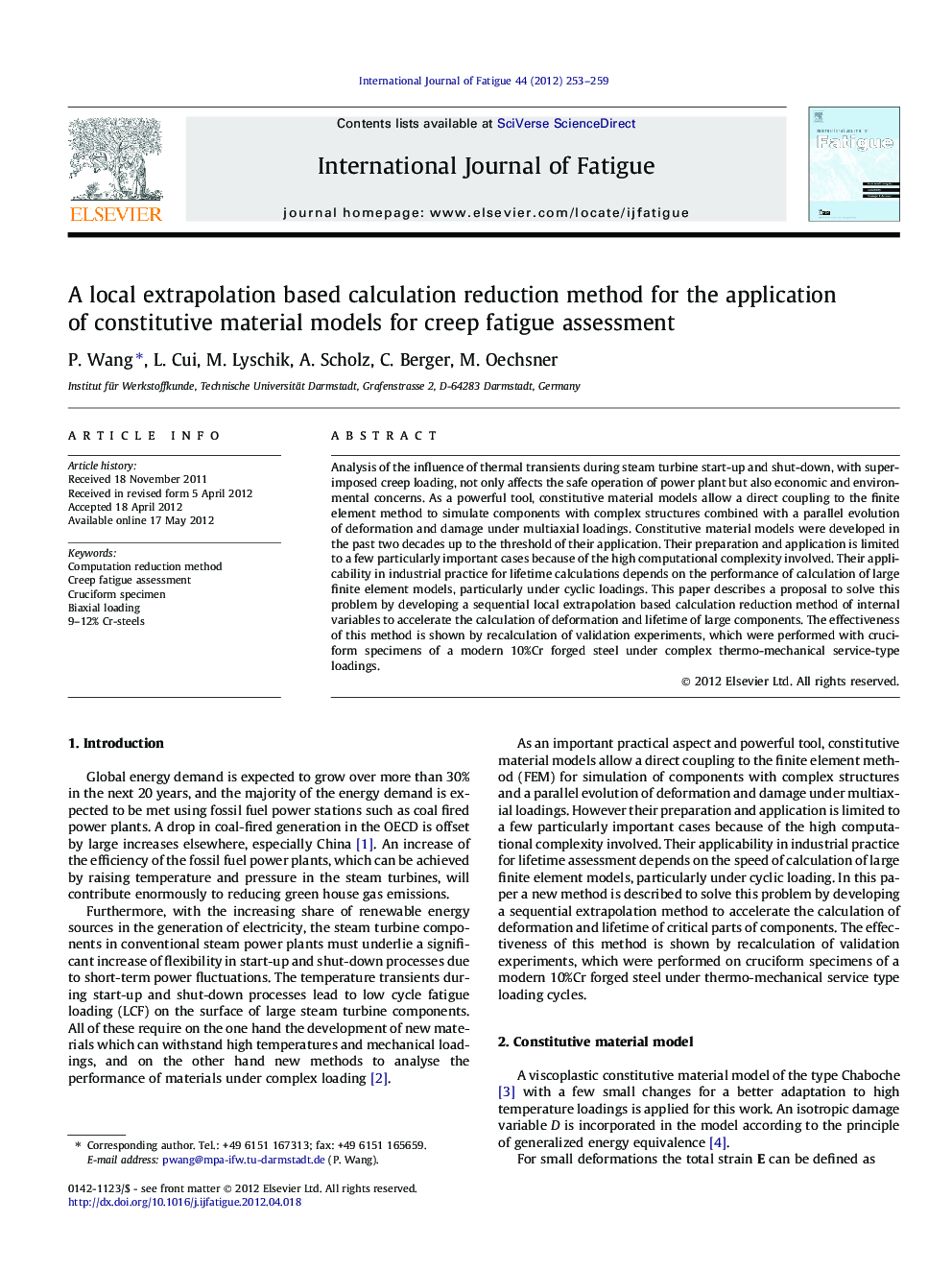| Article ID | Journal | Published Year | Pages | File Type |
|---|---|---|---|---|
| 778321 | International Journal of Fatigue | 2012 | 7 Pages |
Analysis of the influence of thermal transients during steam turbine start-up and shut-down, with superimposed creep loading, not only affects the safe operation of power plant but also economic and environmental concerns. As a powerful tool, constitutive material models allow a direct coupling to the finite element method to simulate components with complex structures combined with a parallel evolution of deformation and damage under multiaxial loadings. Constitutive material models were developed in the past two decades up to the threshold of their application. Their preparation and application is limited to a few particularly important cases because of the high computational complexity involved. Their applicability in industrial practice for lifetime calculations depends on the performance of calculation of large finite element models, particularly under cyclic loadings. This paper describes a proposal to solve this problem by developing a sequential local extrapolation based calculation reduction method of internal variables to accelerate the calculation of deformation and lifetime of large components. The effectiveness of this method is shown by recalculation of validation experiments, which were performed with cruciform specimens of a modern 10%Cr forged steel under complex thermo-mechanical service-type loadings.
► A local extrapolation based calculation reduction method is proposed. ► The extrapolation refers to the internal variables of constitutive material models. ► The method accelerates finite element analyses of components under cyclic loading. ► Computing time reduction by more than a factor of 10 can be achieved. ► A coupled analysis of deformation and damage for complex structures is enabled.
